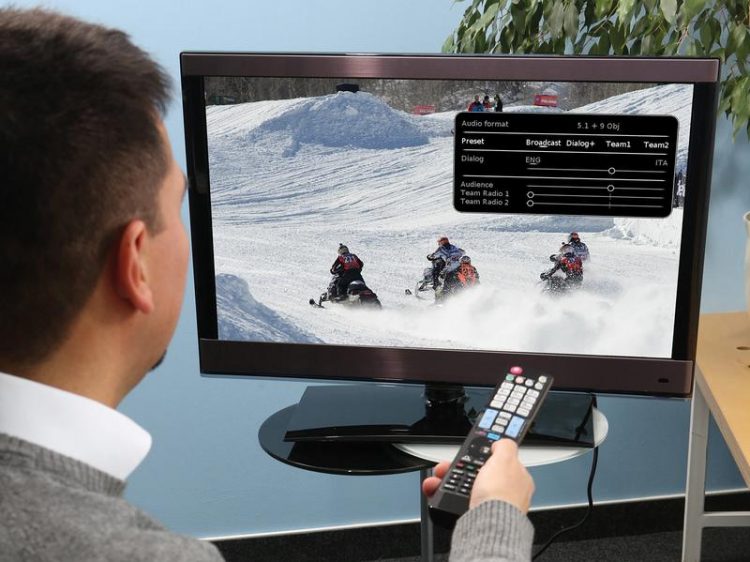Television audio of the future – customizable and in 3D

The MPEG-H 3D Audio standard will allow television viewers to individually customize their TV audio by changing the volume of dialog and background noise elements independently of one another.
Imagine you are watching your favorite sports team in your home theater system: Not only are you right in the middle of the action thanks to 3D sound , you can even choose to listen to the commentator of the home or away team, or to engulf yourself completely in the stadium atmosphere with its cheering fan crowds .
Thanks to the new MPEG-H 3D Audio standard, viewers will be able to individually adjust volume settings for elements such as different commentators without affecting the volume of other elements, such as the stadium atmosphere.
“Users themselves are able to customize the audio playback on their home TV as they desire, whereas previously such changes could be made only by the TV station itself. This technology is known as object-based audio transmission,” says Matthias Rose of the Fraunhofer Institute for Integrated Circuits IIS in Erlangen, Germany, which led the development of this technology.
When equipped with the right speaker configuration, this new technology also allows for a true 3D listening experience at home. “This really makes the viewer feel a lot more like they’re a part of the action,” says Rose.
The MPEG-H 3D Audio standard offers a number of ways to transmit audio content. One way is to transmit the individual audio channels directly, as is currently commonplace, and another is to deliver them as scene-based audio signals (Higher-Order Ambisonics). Additionally, the individual elements of the audio signal can be transmitted as audio objects.
“In practice, we expect audio signals in the future to be comprised of a channel- or scene-based description of music and effects, the sound bed, and several audio objects that contain primarily speech elements,” says Rose.
This technology isn’t expected to be available to consumers for a few more years. It will first be standardized for general broadcast use before it can be used by television stations and installed in devices by manufacturers.
The Fraunhofer institutes of the Alliance Digital Media present in hall 8 booth B.80.
Media Contact
All latest news from the category: Trade Fair News
Newest articles

Superradiant atoms could push the boundaries of how precisely time can be measured
Superradiant atoms can help us measure time more precisely than ever. In a new study, researchers from the University of Copenhagen present a new method for measuring the time interval,…

Ion thermoelectric conversion devices for near room temperature
The electrode sheet of the thermoelectric device consists of ionic hydrogel, which is sandwiched between the electrodes to form, and the Prussian blue on the electrode undergoes a redox reaction…

Zap Energy achieves 37-million-degree temperatures in a compact device
New publication reports record electron temperatures for a small-scale, sheared-flow-stabilized Z-pinch fusion device. In the nine decades since humans first produced fusion reactions, only a few fusion technologies have demonstrated…





















